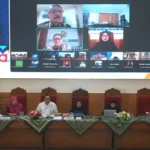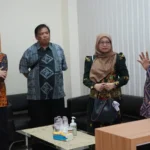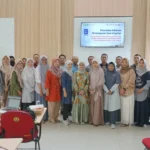Risk of Diabetes
Several diabetes-related genes have already been identified, although all of these together account for only 10 to 15 percent of type 2 diabetes cases. For this study, investigators at the University of Catanzaro in Italy looked at people with and without diabetes in three populations: about 6,500 Italian patients; close to 2,000 U.S. residents; and about 400 French people. Among the study participants with type 2 diabetes, about 7 to 8 percent of people in each group had the variant of the HMGA1 gene. In the Italian group, this represented a 16-fold higher risk in people with type 2 diabetes versus the control group. The gene appears to be involved in insulin resistance, a hallmark of diabetes. But the presence of the gene in people without diabetes varied immensely (from 0.43 to 4.7 percent), making its effect hard to determine.
Although the experts believe the gene may one day help predict individuals likely to develop diabetes, Wittlin is more circumspect, given the relatively small proportion of people who have the variant. “In the best of circumstances that are reported in this study, 7.7 percent of patients with type 2 diabetes have this gene variant,” he said. “Certainly one can identify patients at risk for type 2 more on the basis of such things as family history or body build.”.Another problem with the study is that it was conducted only in white Europeans so “the applicability to other ethnicities is totally unknown,” said Wittlin. Further study of the gene’s effect on insulin resistance in other racial groups is needed.
Risk of homosex
J. Michael Bailey and Richard Pillard studied the gayness between MZ twins, DZ twins, and non-related adopted brothers. They examined how many of the sample population examined were gay and how many were straight. They found that 52% of MZ twins were both self-identified homosexuals, 22% of DZ twins were so, and only 5% of non-related adopted brothers were so. This evidence, repeated and found to be true a second time, showed to the biological camp that the more closely genetically linked a pair is, the more likely they both are to exhibit gay or straight tendencies. Later experimenters found similar evidence in females. One such scientist is Dean Hamer. Hamer examined the possibility of homosexuality being an X-linked trait. He examined the family trees of openly gay men, and thought he saw a maternal link, leading him to investigate his theory of X-linkage. He took 40 DNA samples from homosexual men, and genetically examined them. He found that there was a ‘remarkable concordance’ for 5 genetic markers on section of the X-Chromosome called Xq28.
Hamer hypothesized upon examining the family trees of the same men that on each subject’s mother’s side, there were markedly larger numbers of homosexual men, all stemming through the maternal lineages. This observation, along with his startling discovery on Xq28, led his findings to be dubbed the “gay gene study”. The statistical probability of the 5 genetic markers on Xq28 to have matched randomly was calculated to be 1/100,000, lending even more support to his findings
Two predominant social theorists on homosexuality are David Halperin and Jean Foucault. Although both social theorists, both have largely contrasting ideas on the environmental contributions to the formation of an individual’s homosexuality. Halperin believed in Planophysical theory. This theory believes that homosexuality is a freak of nature, an error. His theory follows in the tradition of psychological theory on this subject. Halperin was a Freudian psychologist, and places stock in Freud’s idea that homosexuality is derived from a failure to resolve Oedipal issues [10]. Although Halperin has a large following from interest groups such as Christian coalitions, his theory is largely disrespected by the psychological community at large, as it provides only a result, not a cause. He fails to produce any scientific evidence. He does, however, provide examples. He postulates that a weak father and strong mother, with an unresolved Oedipus complex will lead to a weak, and then homosexual, son, because the mother has too strong of an image, compared to the weak state of the father. Psychologists argue that this same arrangement would also possibly lead to a stronger son, striving for compensation of his father’s weakness.
Jean Foucault argues, “…homosexuality became because we made it so”. Foucault says that the category of homosexuality itself was only created a mere one hundred years ago, after a German neologism coined some twenty years later. Foucault gives root to the social derivation of homosexuality believing that homosexuality appeared as one of the forms of sexuality, only “after it was transposed from the practice of sodomy into a kind of interior androgyny, a hermaphrodism of the soul”. The theorists believe that the homosexual had been an aberration, and had then become a species, justifying itself with a new word. Perhaps there is no one answer, that sexual orientation, whether homosexual or heterosexual; gay, straight, lesbian, or bisexual, all are a cause of a complex interaction between environmental, cognitive, and anatomical factors, shaping the individual at an early age.
Risk of Scizophrenia
Scientists have made an important breakthrough in understanding the genetic causes of schizophrenia, which affects one in 100 people and is one of the most costly mental illnesses. A study has found multiple mutations in many genes are likely to be a critical trigger for the condition, which underscores the importance DNA plays in whether someone is likely to have schizophrenia. Medical researchers in the United States believe that the findings, in the journal Science, will raise fresh hopes of developing a new class of drugs to combat the effects of the genetic mutations on the brain.
Thomas Insel, director of the US National Institute of Mental Health in Washington, which oversaw the study on 150 schizophrenic patients whose DNA was compared to that of 268 healthy people, said: “Identifying genes prone to harbouring these mutations in brain development pathways holds promise for treatment and prevention of schizophrenia, as well as a wide range of other neurodevelopmental brain disorders.”
Until now, we do not yet know how much of what we are is determined by our DNA and how much by our life experience. But we do know that both play a part. Fast-growing understanding of the human genome has recently made it clear that both sides are partly right. Nature/herediter endows us with inborn abilities and traits; nurture/environment takes these genetic tendencies and molds them as we learn and mature. While a gene may increase the likelihood that you’ll behave in a particular way, it does not make people do things. Which means that we still get to choose who we’ll be when we grow up.
Penulis: Ancah CN Marchianti









